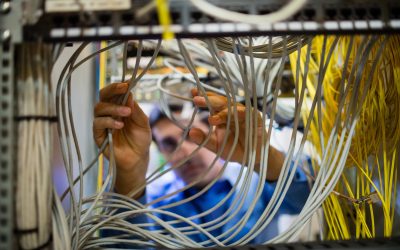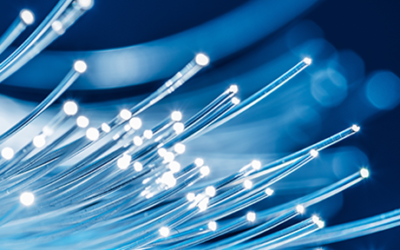Smart Buildings and Homes – The Revolution or Evolution of the Networking Industry?

Tags: 5G | Category 6A | fiber optic | intelligent building | IoT | WiFi 6
Network Infrastructure Integration
Using dedicated network infrastructures for different systems is a tradition that’s slow to die – now the era of new IP-based wired and wireless systems is making the savings offered by integrated cabling and wireless infrastructure hard to ignore.
Doing things the way they’ve always been done is a comfortable approach that leads to a false sense of security that everything will go well. But, for building infrastructures, sticking to tradition comes at a high price.
Using separate networks for data/voice, environmental control, security surveillance or other systems can seriously damage your ability to adapt to the rapidly changing future.
Importance of a Modern Workplace With Integrated IT and Facility Infrastructure
The modern workplace is undergoing a rapid transformation to accommodate changing workforce behaviours and usage patterns. These changes demand flexibility in the layout of offices, collaboration spaces, conference rooms, home office and other common areas.
Wired and wireless technologies are key enablers of this transformation, and the efficiency of modern smart buildings is becoming highly dependent on an integrated IT and Facility cabling and wireless infrastructure.
The workplace transformation is driving a transition in telecommunications infrastructure—from workstation centric to distributed device centric, with an increasing number of connectivity points located in or near the ceiling.
GROWING TECHNOLOGY AND CONNECTIVITY REQUIREMENTS
In addition to the user connectivity requirements at the work area locations, connectivity points in other locations are required to support the growing use of technologies such as:
- Wireless technologies (predominantly Wi-Fi and in-building wireless) that require additional connections in the ceiling for access points throughout the space, especially as new generations of wireless such as 5G and WiFi 6 get deployed.
- Security and access control systems that are increasingly supported by ceiling connectivity for PoE-powered cameras, controllers and card readers.
- Space and energy management systems that rely on distributed sensors throughout the space to optimize space utilization and support occupancy-based energy management via integration with network-controlled LED lights and HVAC systems.
- Digital displays that are increasingly being deployed for uses ranging from space and energy monitoring to displaying the location of unoccupied rooms and personnel.
Given this evolving connectivity landscape, IT and Facilities managers must consider new strategies for integrating the growing wireless requirements and the increasing number and types of networked devices onto the network.
This involves rethinking how to deploy a uniform, flexible cabling and wireless coverage infrastructure throughout the building.
Learn more about planning for wired and wireless infrastructures.

Written by James Donovan
You might also enjoy
FO Connector Contamination – A Constant Threat
Fiber optic communication most commonly works in duplex or multifiber transmission by transmitting light to a receiver in one direction on a fiber and receiving transmitted light back to a second receiver on the second fiber. Most engineers can understand that and...
Why Inspect and Clean Fiber Optic Connectors?
Inspecting and cleaning of fiber optic connectors during installation and when making any patching, is essential. Any contamination on a patch cord connector will be transferred through the coupler to the connector it is mated to. Even when testing fibers with a test...
Cleaning MPOs
MPO connectors should always be inspected with a scope before they are used, be that on a patch cord or a bulkhead. If they need to be cleaned, one-click cleaners are keyed to ensure the tip only fits one way onto the connectors and is able to clean both male and...


